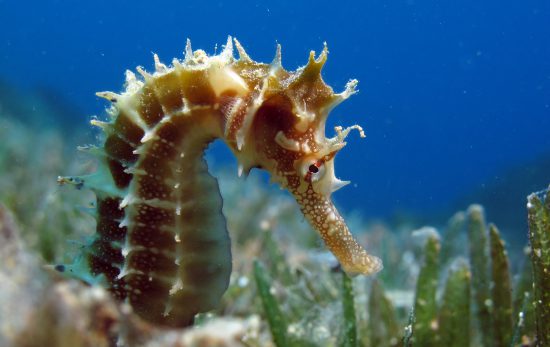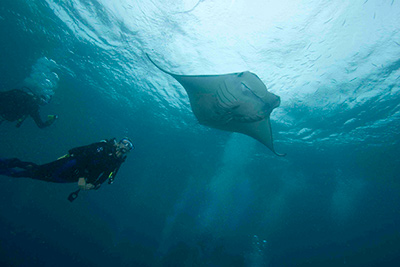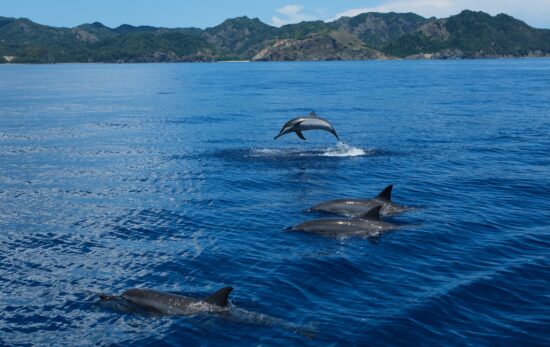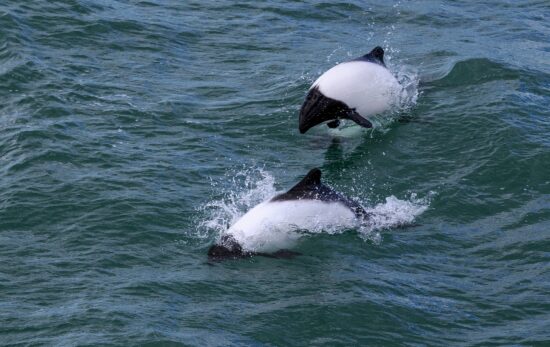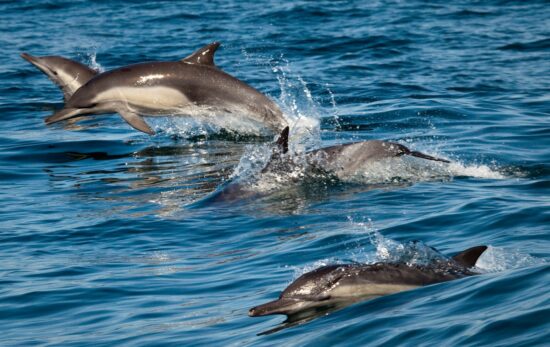Dolphins are undoubtedly some of the most fascinating and well-known ocean animals in the world – and for good reason! With their forthcoming curiosity, incredible acrobatic skills, and sharp intellect, dolphins have piqued human interest for millennia. However, despite their popularity, there’s a lot that people don’t know about these marine mammals. In fact, we are just beginning to understand how dolphins communicate to each other and how deep their social bonds can run. Thanks to groundbreaking research and conservation efforts, we are still learning more about dolphins every day. So to better understand these animals that have inhabited our oceans for millions of years, we are here to share some of the most fascinating dolphin facts around!
Any scuba diver or freediver that’s ever had the opportunity to share the underwater world with a dolphin (or pod of dolphins) will certainly tell you that it was one of the best experiences they’ve ever had.
Warning: These dolphin facts will most likely make you love dolphins even more than you already do.
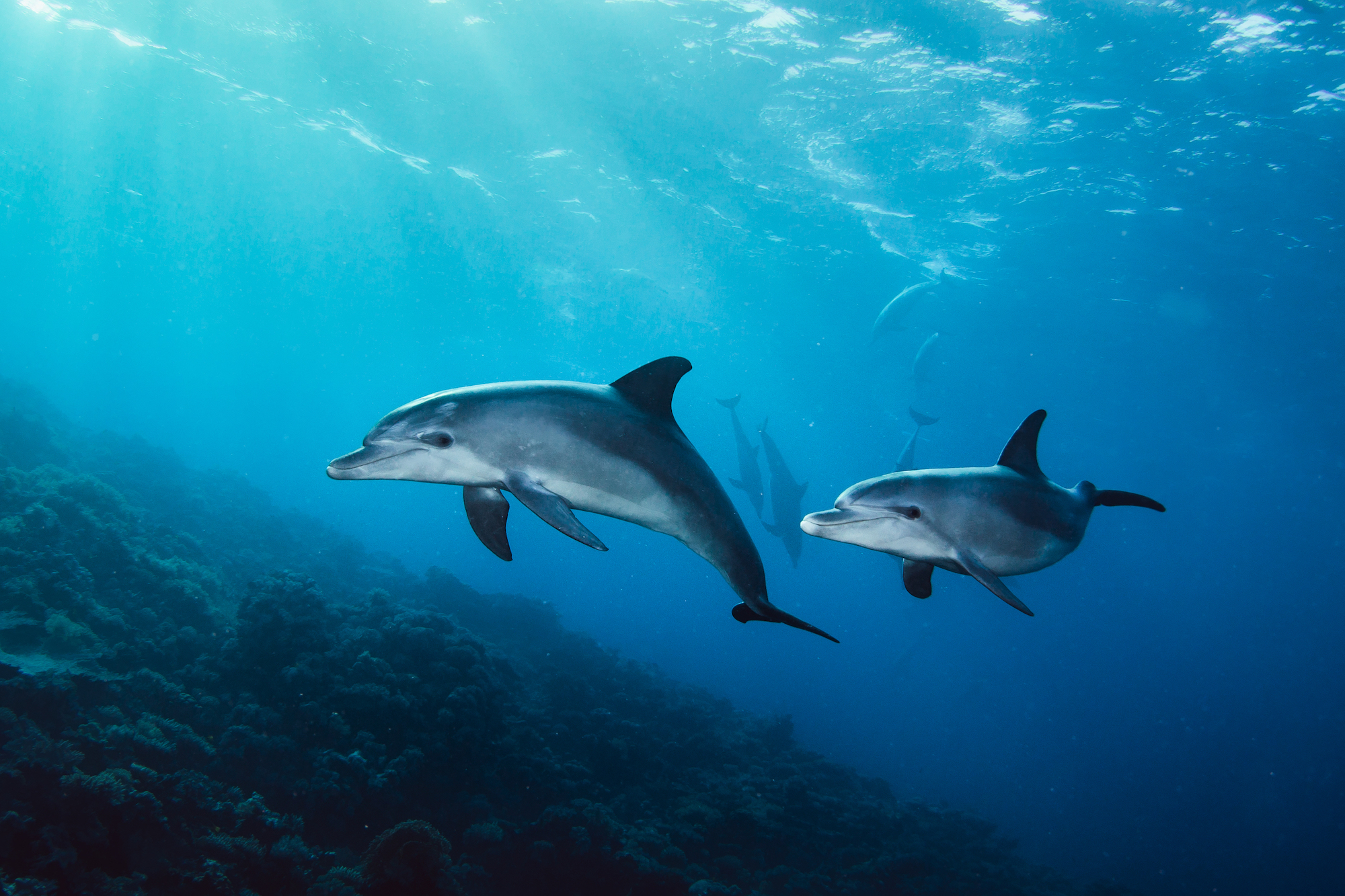
Here Are 10 Fun Facts About Dolphins
1. Celebrated and known for their playful behavior, dolphins are highly intelligent creatures. In fact, they have a brain to body ratio that is second only to humans. Dolphins are also one of the few species to pass the self-awareness test, where they can identify themselves in a mirror. On top of that, they can actually recognize their own reflection much earlier on in their lives than other animals – and that includes humans.
2. They are highly social animals, primarily living in groups that hunt and play together. Large pods of dolphins, called ‘superpods’ can be made up of 1,000 members or more! A recent study in Shark Bay, Western Australia followed an entire dolphin pod for decades. Observations revealed that dolphins also exhibit a wide range of personalities from introverted to extroverted, similar to that of humans (who are also very social animals).
3. Dolphins have a highly complex and developed communication system, which many scientists now equate to the dolphins’ spoken “language”. Marine biologists have observed that the exchange of spoken pulses between dolphins almost “resembles a conversation between two people”. The dolphins often take turns vocalizing and do not interrupt each other.
4. Dolphins are carnivores and spectacular hunters. Their diets typically consist of fish, squid, and crustaceans, but can extend to a much longer list of prey. A dolphin that weighs 260 pounds (118 kilograms) eats approximately 33 pounds (15 kilograms) of fish per day. In order to satiate the hunger of an entire pod, dolphins have learned to work together to hunt. For example, one such technique is called the “driver and barrier”, where one group of dolphins pursues the fish, and the second group acts as the barrier to wall the prey in.
5. While dolphins have no sense of smell, they make up for this with their other extraordinary senses. They have acute eyesight both in and out of the water, and they have a well-developed sense of touch. They can also hear frequencies that are ten times above the upper limit of adult human hearing. Moreover, dolphins can expertly use echolocation to pinpoint distant or hidden objects. Their unique perception of the world through sound paints a perspective that humans will never be able to fully grasp.
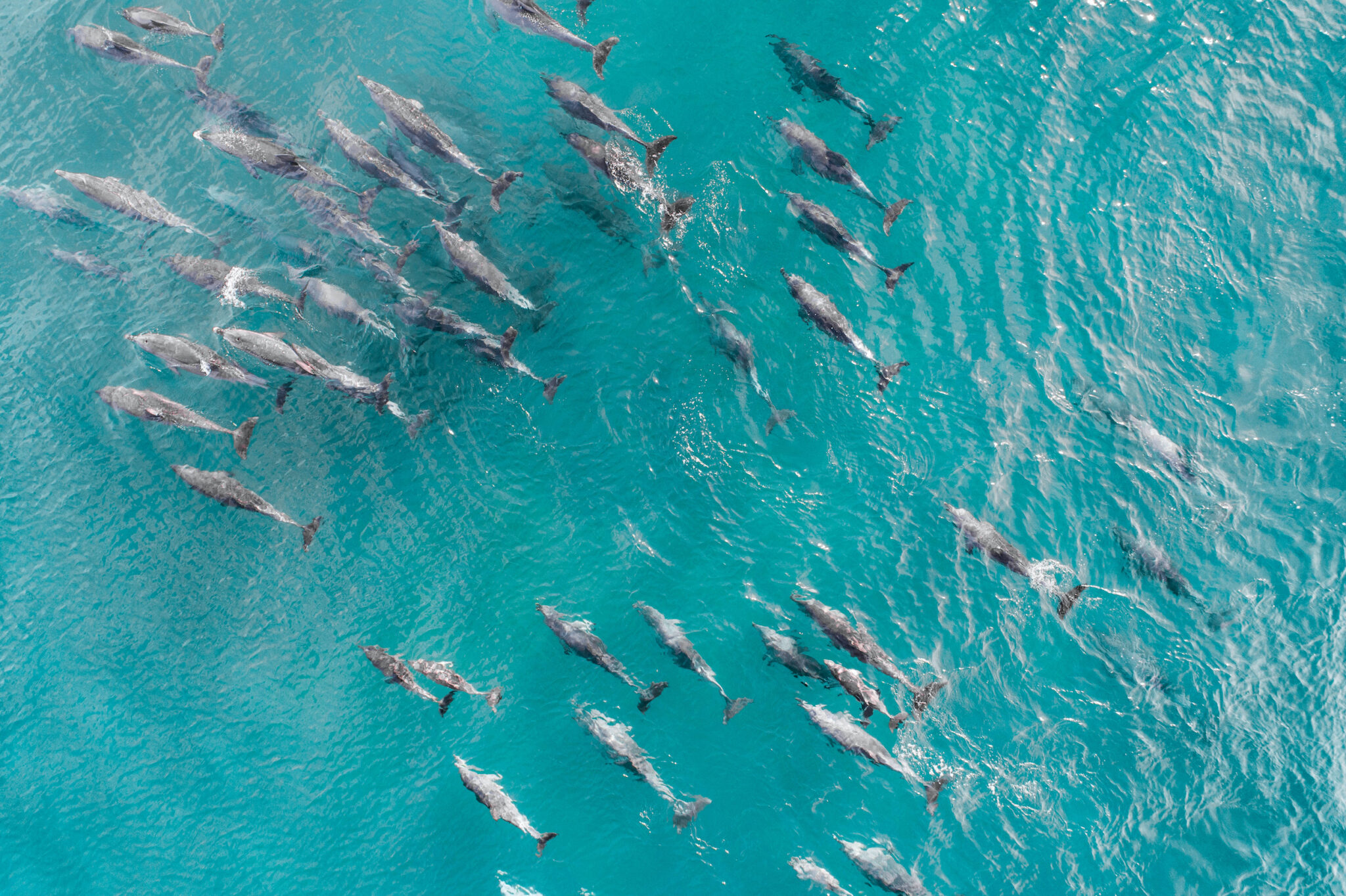
Fascinating Dolphin Facts Continued…
6. Dolphins belong to the scientific order called Cetaceans, which also includes whales – their closest relatives. In the Delphinidae (dolphin) family, orcas are the largest species of dolphin, despite their misleading nickname as “killer whales”.
7. Nearly 40 different dolphin species inhabit the waters of the world. While most species of dolphins live in coastal areas of tropical and temperate oceans, there are five species that live in freshwater rivers (including the Amazon pink river dolphin).
8. These marine mammals give live birth, similar to humans – except the baby is born tail first! Depending on the species, dolphin gestation takes anywhere between 9 and 17 months. After giving birth, dolphins are incredibly maternal. The mother helps the calf to the surface for its first breath, and they’ve even been observed nestling and cuddling with their young. Depending on the species, dolphin calves (babies) nurse for up to 2 years. A calf may stay with its mother for anywhere from 3 to 8 years.
9. Dolphins have few natural enemies. Unfortunately, humans are their main threat. The key issues include polluted habitats, being caught as bycatch in commercial fisheries, and targeted hunting. Sadly, in just 2006, the Yangtze River dolphin became functionally extinct.
10. Because dolphins are mammals, they need to come to the surface to breathe. Unlike land mammals that breathe and eat through their mouths, dolphins have separate holes for each task. Dolphins eat through their mouths and breathe through their blowholes. This prevents dolphins from sucking up water into their lungs when eating, reducing the risk of drowning.
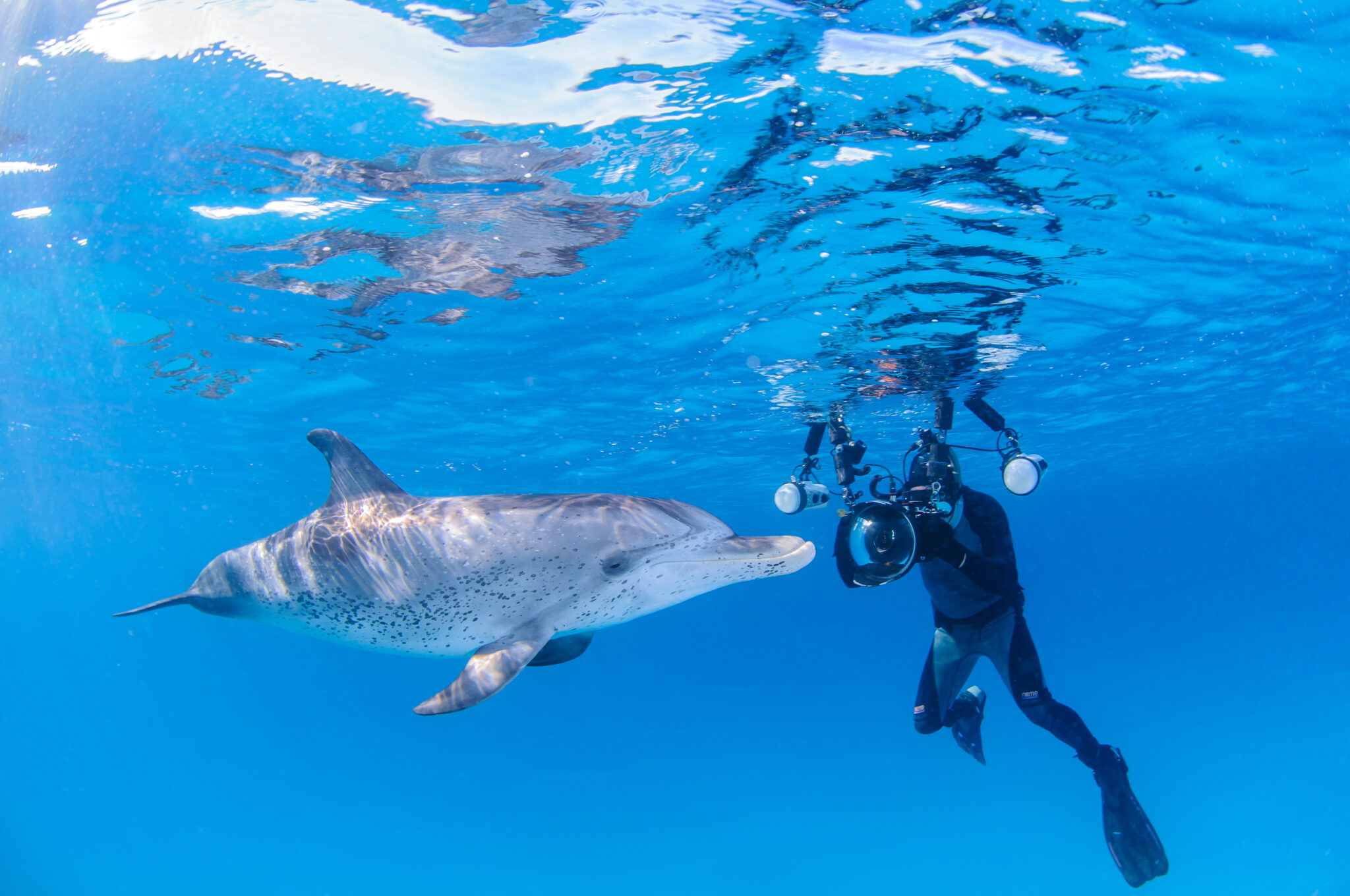
Ready to Dive In?
If you love these dolphin facts and want to observe them in their natural environment, here’s what we recommend:
- If you aren’t already, become a PADI Open Water Diver and/or PADI Freediver. You can start right now with PADI eLearning, before connecting with a PADI Dive Center to complete your in-water training.
- Check out the 10 Best Places to Swim and Dive with Dolphins.
- Let the experts at PADI Travel help you plan and book your next dive trip, or use PADI Adventures to seek adventure in your local area.
Bonus Dolphin Fact!
Dolphins and humpback whales can often be extremely playful with each other. In fact, many scientists believe that the ‘surfing’ or bow riding that dolphins exhibit in front of boats, may have been inspired by their riding in front of or in the wake of big whales. If you love dolphins, six back and relax while you watch this majestic footage captured in Hawaii of dolphins swimming with humpback whales.
